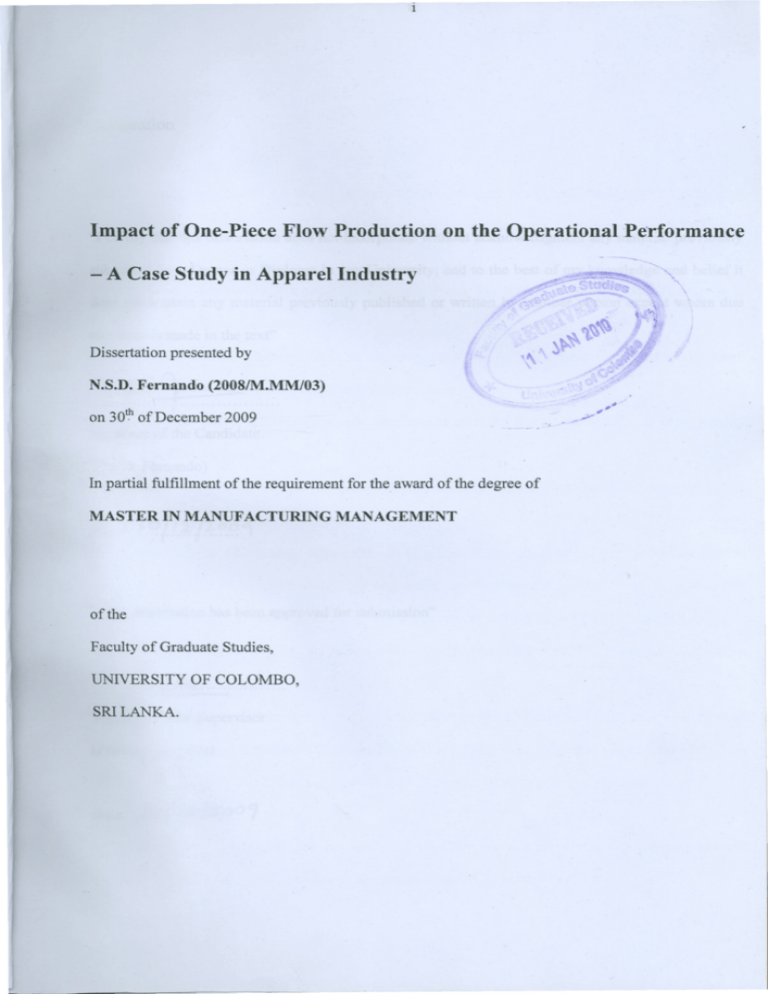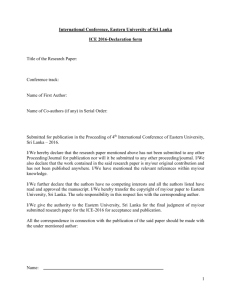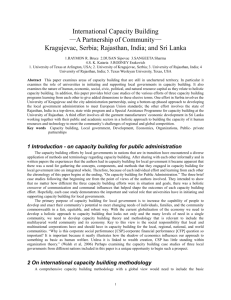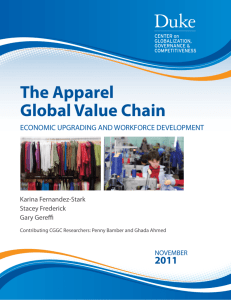Impact of One-Piece Flow Production on the Operational Performance
advertisement

1 Impact of One-Piece Flow Production on the Operational Performance - ---.- - A Case Study in Apparel Industry .-- ---:"'!IlL. "'~ - ~~ ~ . .." - \ .~~ Dissertation presented by ,,. ~,~~ ~~ N.S.D. Fernando (2008/M.MMI03) J1'~ on 30t?of December 2009 In partial fulfillment of the requirement for the award of the degree of MASTER IN MANUFACTURING MANAGEMENT of the Facility of Graduate Studies, UNIVERSITY OF COLOMBO, SRI LANKA. I l - /'" 4 IV Abstract Sri Lanka has been in the apparel manufacturing business for almost 30 years time. Over the years the manufacturing cost has inflated unexpectedly. Therefore the cost leadership is diverting to other countries in the region where the cost of production is lower than that in Sri Lanka. It is high time industry took a realistic step to change its manufacturing culture to regain the strengths. Change management and manufacturing process changes will be the best alternatives, when it comes to this cultural changing process. When it comes to the process changes 'Lean' manufacturing philosophy is a better candidate as an alternative. Lean principles such as 'one-piece flow production' will come in handy for massIve process. improvements. Though one-piece flow production expects minimal variations in the system, it can be customizedto suit the apparel manufacturing variability. The best customization would be to practise the 'multi-loop CONWIP' concept. This concept executes small number of loops (workstation groups) in the sewing line, which practises the pure one-piece flow production and keeps ajustifiable WIP at the end of the loop to back up against variability. This production principle helps to keep the continuous flow throughout the sewing lines and eliminates all the drawbacks inherited in the traditional progressive bundle production systems where work is kept waiting for long hours before and after processing. The study shows how this new production concept is superior to the traditional progressive bundle production in one of the Sri Lanka's leading apparel group. At the same time it elaborates how the new system's core criterion, the WIP reduction, affects efficiency, quality and worker morale.






![Occasional Speaker Seminar Promo: 11nov2013 [DOC 141.50KB]](http://s3.studylib.net/store/data/007901734_2-14b3b38981428647084da60c964a252f-300x300.png)


